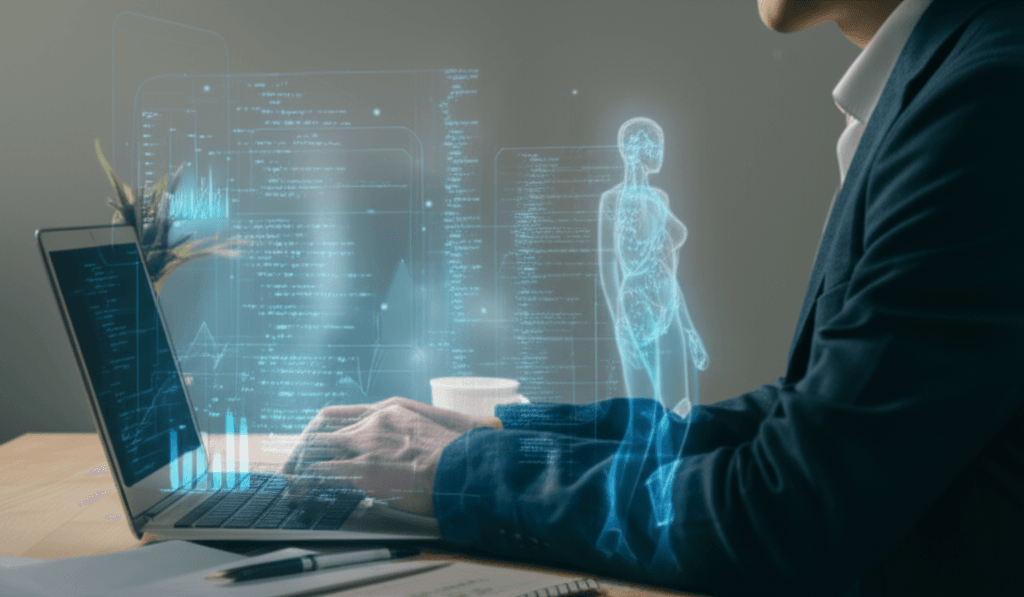Engineering AI into Your Daily Workflow: Strategies for the AI-Augmented Developer
Introduction: The Rise of the AI-Augmented Developer
The software development landscape is rapidly transforming. Artificial intelligence, once a distant concept, is now deeply integrated into our daily workflows [1]. We are witnessing the emergence of the "AI-augmented developer"—a professional who uses AI tools not as novelties, but as fundamental components of their engineering practice [0].
This shift moves beyond the hype to focus on practical application. As engineers, how do we effectively integrate AI assistants and agents into our core development loops? How do we leverage the significant productivity gains while rigorously maintaining standards for quality, security, and control [3]? This post explores actionable strategies for navigating this new era, emphasizing the engineering discipline required to make AI a true collaborator [2].
Integrating AI into the Core Coding & Refactoring Loop
AI's most immediate impact is often felt directly within the Integrated Development Environment (IDE) [4].
- Accelerated Coding & Boilerplate: Tools like GitHub Copilot and Cursor are changing how code is written. They offer intelligent autocompletions and generate boilerplate snippets based on context or natural language prompts [5]. This significantly speeds up the initial coding phase.
- Understanding Complex Code: Navigating a complex legacy system or an intricate function? AI assistants can analyze code snippets, explain their purpose, and even suggest documentation, making unfamiliar codebases more accessible [6].
- Smarter Refactoring & Review: AI can serve as an initial reviewer, identifying potential bugs, suggesting refactoring opportunities for improved readability or performance, and even proposing alternative implementations based on best practices learned from vast datasets [7].
The productivity gains here are substantial, often dramatically reducing time spent on routine coding tasks [8]. However, this speed requires a critical understanding: developer oversight is essential. AI suggestions are starting points, not final solutions, demanding careful validation [8].
AI for Deeper Code Analysis, Debugging, and Testing
Beyond the immediate coding loop, AI provides powerful capabilities for in-depth analysis and quality assurance [9].
- Decoding Errors: Cryptic error messages can halt progress. AI assistants can interpret these messages, explain potential root causes, and suggest concrete fixes, turning frustrating roadblocks into learning opportunities [10].
- Log & Performance Analysis: Manually sifting through extensive logs or performance traces is time-consuming. AI can analyze this data to automatically pinpoint performance bottlenecks, detect anomalies indicating potential issues, and correlate events across sources to accelerate root cause analysis [11].
- Jumpstarting Testing: AI can analyze code context and requirements to generate initial test cases or suggest relevant test data, helping improve test coverage and reduce manual test setup effort [12].
These AI-powered insights streamline the often lengthy processes of debugging and testing, enabling developers to understand and resolve bugs more efficiently [13].
Engineering for Reliability, Security, and Quality in AI-Assisted Development
Effective AI integration demands strong engineering discipline, particularly concerning reliability, security, and quality [14]. Blindly accepting AI output is risky.
- Enhanced Testing & Validation: AI-generated code requires rigorous validation. Implement enhanced testing strategies and automated validation pipelines specifically for AI-assisted code segments. Treat AI output as potentially untrusted input requiring thorough checks [15].
- Security Vigilance: AI models trained on public code may inadvertently reproduce vulnerabilities or insecure patterns [16]. Be vigilant about security risks such as generated vulnerabilities (e.g., SQL injection, XSS) or prompt injection attacks where malicious input manipulates the AI's output. Integrate security scanning (SAST, DAST) and maintain strict review processes for AI contributions [16].
- Quality & Maintainability Guidelines: Establish clear guidelines and workflows for using AI tools. Ensure AI-generated code adheres to your team's coding standards, style guides, and architectural patterns to maintain consistency and long-term maintainability [17]. Clearly document AI usage [17].
- IP, Licensing & Bias Awareness: Be mindful of intellectual property and licensing implications of AI-generated code, as models might be trained on data with restrictive licenses [18]. Also, recognize that AI can inherit and perpetuate biases present in its training data. Implement checks and balances to mitigate these risks [18].
Conclusion: The Developer as the Essential Conductor
Engineering AI into your workflow is about augmenting developer capabilities, not replacing them [19]. Key strategies include identifying suitable integration points, selecting appropriate tools, establishing robust validation processes, and fostering a culture of critical oversight [20].
AI is a powerful tool, capable of accelerating development and automating repetitive tasks [21]. However, it lacks the context, critical thinking, ethical judgment, and deep understanding that human developers provide. Verification, contextual awareness, and ultimate decision-making remain firmly with the developer [21].
Looking ahead, the landscape of AI in development will continue its rapid evolution [22]. AI will become even more integrated, automating increasingly complex tasks. Nevertheless, the developer's role as the essential conductor—guiding the tools, ensuring quality, solving novel problems, and taking ultimate responsibility for the final product—is not only secure but more vital than ever [22]. The future belongs to the AI-augmented developer who skillfully orchestrates these powerful new instruments.
